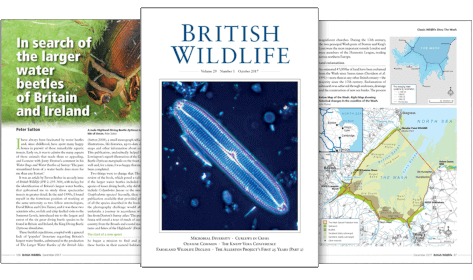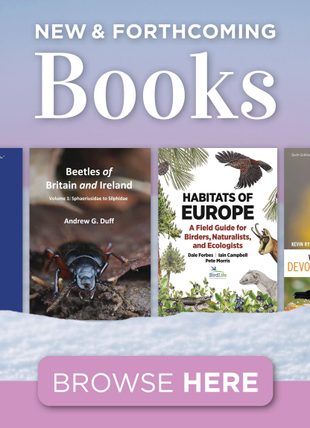By: Samara Silva de Souza(Editor), Susana Braz-Mota(Editor), Adalberto Luis Val(Editor)
590 pages, 104 colour & 34 b/w illustrations
![The Future of Amazonian Aquatic Biota The Future of Amazonian Aquatic Biota]()
Click to have a closer look
About this book
Contents
Customer reviews
Biography
Related titles
About this book
The aquatic habitats of the Amazon region are subject to natural daily and seasonal variations in the physico-chemical properties of the water. The organisms that inhabit these habitats have developed adaptations to cope with these natural events. However, human-induced environmental changes are threatening ecosystems and affecting biodiversity at all levels of biological organisation by causing drastic changes in climatic conditions in a shorter period of time, without giving organisms time to adapt. In this sense, the book addresses the future of aquatic organisms in the Amazon, including bacterial symbionts, insects, crustaceans, fish, plants, and amphibians. It provides an overview of what the future of biodiversity in the Amazon will look like, both in terms of organisms' adaptations to natural changes and in terms of vulnerability and responses to human impacts, highlighting possible mechanisms to minimise the expected impacts. The book also provides a brief overview of the risks that climate change poses to livestock, strategies for the sustainable use of species in the Amazon region and the impact of climate change on fish diseases.
Contents
Introduction
Part I: Impacts of anthropogenic pressure and climate change in the responses of Amazonian aquatic organisms.
1. Anthropogenic climate change is a present and future stressor for fish communities in the Amazon Basin.
2. Genetics, toxicological background, and environmental adaptation processes of disease-vector mosquitoes in the Amazon.
3. Dissolved Organic Carbon (DOC) of the Rio Negro, Amazonia: Importance, Processes and Potential Anthropogenic Impacts.
4. Impacts of climate change and local disturbance on stream fish assemblages in the Amazon.
5. Amazonian aquatic insects in a changing world
6. Aquatic herbaceous plants of the Amazonian Wetlands: key species under pressure.
7. The fate of floodplain forests in a changing Amazon
8. Amazonian aquatic food webs, their variation and vulnerability in regard to climate change
Part II: Ecotoxicology: fish and amphibian sensitivity.
9. A double threat to Amazonian frogs: toxic contaminants and their interaction with global climate change
10. Toxicological impacts of pesticides and heavy metals on Amazon fish: trends and future perspectives
11. Impact of organic pollution on the genome of native Amazonian fish species: highlights for the cytogenomics and gene expression
Part III: Phenotypic plasticity and adaptive mechanisms: change to survive
12. Amazonian fish and their bacterial symbionts: An intricate co-dependence relationship in a changing environment
13. Environmental nucleic acids: A toolkit for monitoring diversity, conservation and environmental/population health
14. Air-breathing fish in the Amazon facing elevated temperatures
Part IV: Physiological and biochemical responses.
15. Amazonio Crustaceans: Macrobrachium amazonicum (Decapoda, Palaemonidae)
16. Is electron transport system activity assay useful for aerobic scope estimation of thermal metabolic stress in fish? A case study with fish from different climatic zones
17. Limited thermal capacity of Amazonian fishes to survive in a warming world
Part V: Aquaculture as a tool to ensure food security in the Amazon
18. The future of the value chain of the Pirarucu in the Brazilian Amazon
19. Impacts of Climate Change on the Parasite-Host Relationship in Freshwater Aquaculture
20. Conclusion and Perspectives
Customer Reviews
Biography
Samara Silva de Souza, PhD in Genetics, Conservation and Evolutionary Biology (INPA), studies aquatic toxicology with a focus on the effects of contaminants such as hydrocarbons and pesticides and the combination with physical-chemical factors in water on the biological responses of fish, including molecular biology, oxidative stress and antioxidant mechanisms.
Susana Braz-Mota, PhD in Biology, Freshwater Biology and Inland Fisheries (INPA), is an expert in the physiological effects of metals, nanoparticles, herbicides and hydrocarbons on mortality, free radical production, antioxidant defence, oxidative stress and morphological changes of aquatic organisms. She also studies the mitochondrial biochemical mechanisms of respiration in fish exposed to high temperature and hypoxia.
Adalberto Val is a leading expert in the field of Amazonian fish biology and has published over 220 articles. His books include Fishes of the Amazon and Their Environment, published by Springer. He has served as General Director of INPA (2006-2014) and has been coordinating the ADAPTA project since 2009. He is a member of the Brazilian Academy of Sciences, a member of the World Academy of Sciences (TWAS), and an awardee of the Gran Cross of the National Order of Scientific Merit (Brazil).
By: Samara Silva de Souza(Editor), Susana Braz-Mota(Editor), Adalberto Luis Val(Editor)
590 pages, 104 colour & 34 b/w illustrations


































